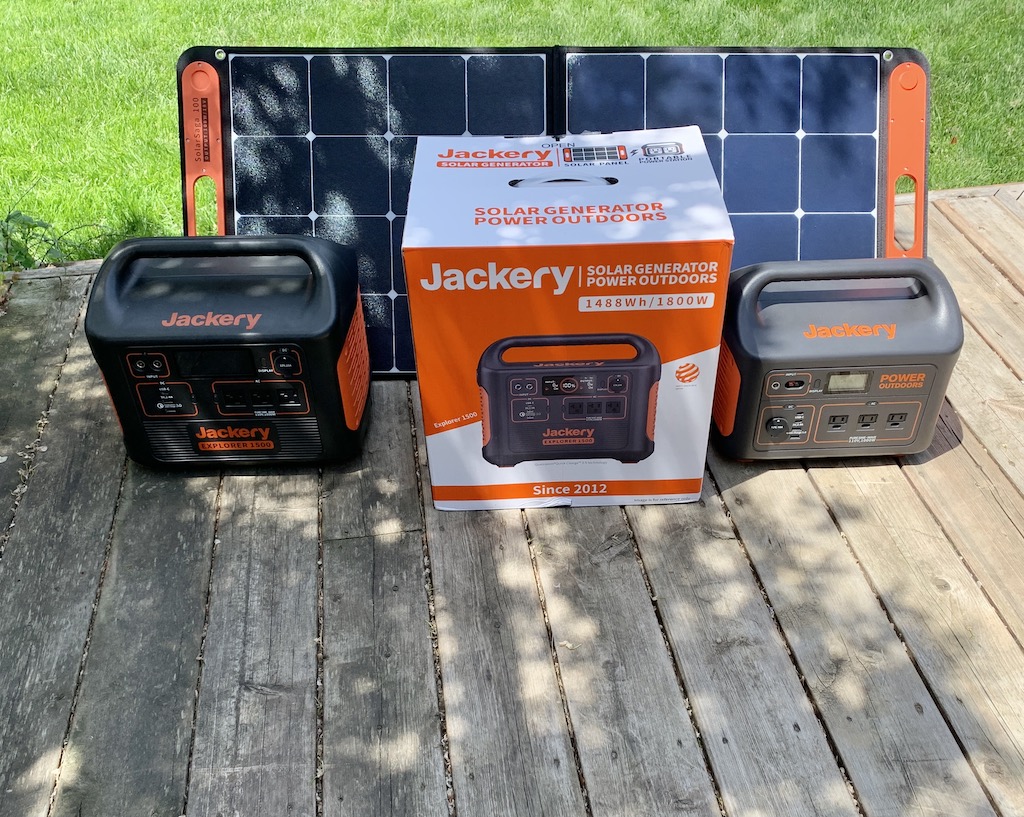 Portable power stations are increasingly popular, and with good reason. Extreme weather events have resulted in more frequent power outages. Unlike a backup generator, a battery power station is safe to use indoors. It’s also portable, so it can do double-duty for activities like camping. At the same time, battery technology is improving and costs are coming down. Jackery is one of the companies that’s been at the leading edge of the portable power station market with its Explorer line. The company also sells its own Solar Saga portable solar panels. Power station and solar panel can be used individually, or together as a green power solution.
Portable power stations are increasingly popular, and with good reason. Extreme weather events have resulted in more frequent power outages. Unlike a backup generator, a battery power station is safe to use indoors. It’s also portable, so it can do double-duty for activities like camping. At the same time, battery technology is improving and costs are coming down. Jackery is one of the companies that’s been at the leading edge of the portable power station market with its Explorer line. The company also sells its own Solar Saga portable solar panels. Power station and solar panel can be used individually, or together as a green power solution.
While you may not recognize the brand, Jackery has been around for some time. The company was launched in 2012 by a former Apple battery engineer. It’s trusted enough that Honda licensed Jackery to manufacture one of its branded power stations. I’ve been trying out Jackery products for over three years now, evaluating a half dozen power stations and solar panels and comparing them against multiple competitors. Jackery has been consistently impressive and I think it makes a great choice if you’re interested in portable power, emergency power solutions, and solar panels.
Here’s an overview of my experience, with several of my favourite Jackery products highlighted.
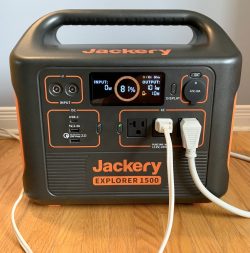 What to expect from Jackery Explorer portable power stations
What to expect from Jackery Explorer portable power stations
Jackery has come up with a design approach that is used throughout its Explorer lineup. The power stations are a dark grey plastic box with rounded edges and a sturdy integrated handle on the top. The are orange, vented, and a fan inside handles thermals. The back is plain grey and vented. Power outputs and inputs (they can be charged by AC, DV car adapter, or a solar panel) are on the front. So is the display, which is a very clear to read and shows the info you care about (such as percent of charge remaining, hours of use remaining, power output, and power input). Each is equipped with an LED emergency light as well.
Explorer power stations can be used outdoors, but not in wet conditions. Naming is an indicator of power. For example the Explorer 1000 has a 1002Wh battery capacity.
Explorer 290
I actually tested a Honda-branded version of this portable power station, but it was identical to the version Jackery sells under its own name. Extremely portable, the Explorer 290 has a pair of USB Type-A ports, a 12V car port and a single pure-sine wave AC outlet. In testing, its 292Wh battery ran a 27-inch iMac for just under three hours.
Explorer 550
The Explorer 550 can put out 500W of power and has a 550Wh lithium-ion battery pack. Compared to the Explorer 290, it gains two more USB Type-A ports. I tested an earlier version (the Explorer 500) several years ago. It was identical to the current model except for a slightly lower-capacity battery 518Wh). This portable power station ran the iMac setup for four and a half hours.
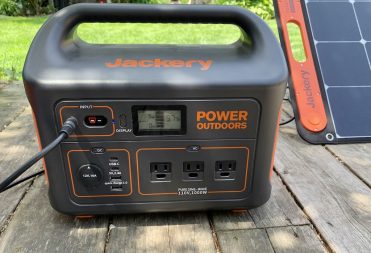 Explorer 1000
Explorer 1000
I got my hands on a Jackery Explorer 1000 last November. This was the first Explorer that I tried charging with a solar panel—once spring came around. It features a 1002Wh battery and 1,000W output. Compared to the Explorer 550 the Explorer 1000 loses a USB-A port, but gets two USB Type-C ports. It gets three AC outlets instead of a single. It also features an Anderson input port for use with third-party solar panels.
The Explorer 1000 powered the 21 cubic foot beer fridge in my basement for just under 13 hours.
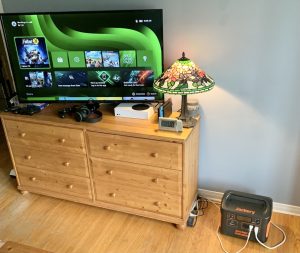 Explorer 1500: a beast of a portable power station, but it is extremely capable
Explorer 1500: a beast of a portable power station, but it is extremely capable
The Explorer 1500 is the most capable portable power station I’ve evaluated from Jackery. It’s also the largest, tipping the scales at 33 lbs (15 kg). It follows the familiar Explorer design, just super-sized.
If that sounds big, it is. However, it’s still easy enough to carry around for short distances and the handle makes it relatively easy to manage. On a side note, if you think 33 lbs is heavy, I am currently testing a battery power station from another company that weighs over 160 lbs. Puts it in some perspective ….
The Explorer 15 is equipped with 1488Wh of Panasonic Lithium Ion batteries. It has a full suite of output ports including USB-C, USB Type A (including one fast charge), 12V, and three 110V AC outlets. It can output up to 1,800W (3,600W peak), which gives it a huge advantage over many power stations. This one can be used with high-wattage devices like heaters, air conditioners, toasters, and microwave ovens.
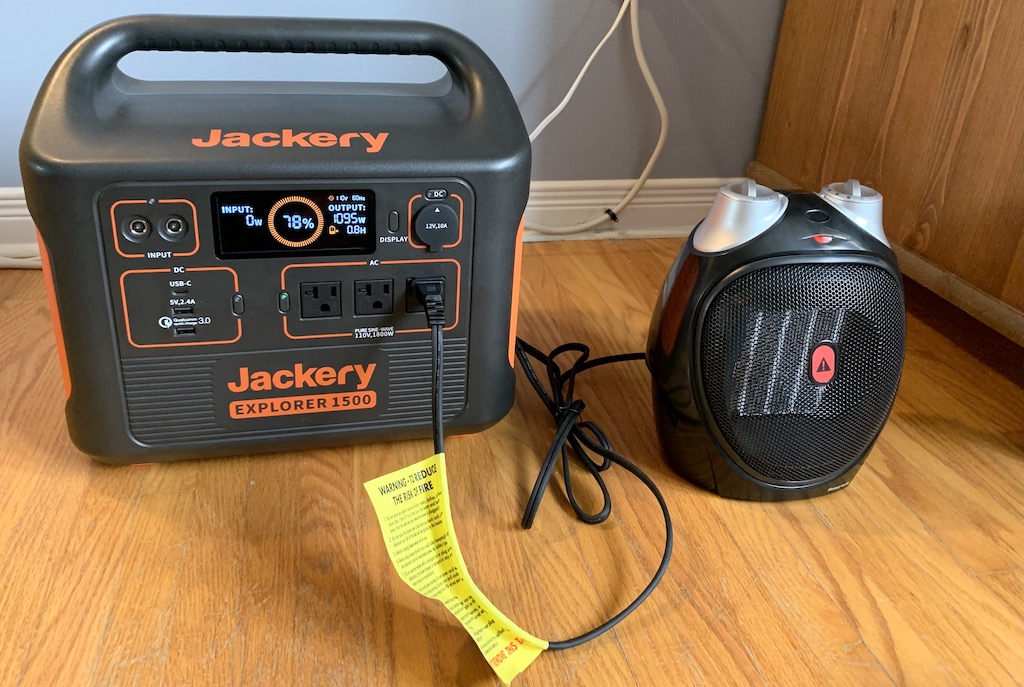
In testing, I used an Explorer 1500 to power a 55-inch 4K TV, Xbox One S, and assorted lights and gadgets for over nine hours. If I’d stuck with a video streamer instead of the game console, that would easily have added two or three more hours to the run time. No more blackout boredom!
It was also able to power a 1500W portable heater. The one downside to the Explorer 1500—at least if you want to charge it using solar panels—is that this model requires two Solar Saga panels run in parallel.
Solar Saga 90 portable solar panel
Finally, the Jackery Solar Saga 90 portable solar panel. I’ve been using the company’s Solar Saga 100 solar panel, which is identical in design but just slightly higher output (100W vs. 90W). These are monocrystalline solar panels with efficiency of up to 23%. Jackery designed them to fold for easy carrying. They secure with magnets, have plastic handles, and weigh only 9 lbs (4kg). Kickstands secure with velcro, and a built-in zippered pouch hides a charger with an integrated DC cable that connects to Explorer battery stations.
Fold out the Solar Saga and it extends to about 4 feet (1.2 metres). It even has USB-A and USB Type-C ports so you can charge a mobile device directly. I fully charged a smartphone in full sun using the Solar Saga 100 in about four hours. The Solar Saga 90 should offer similar performance.
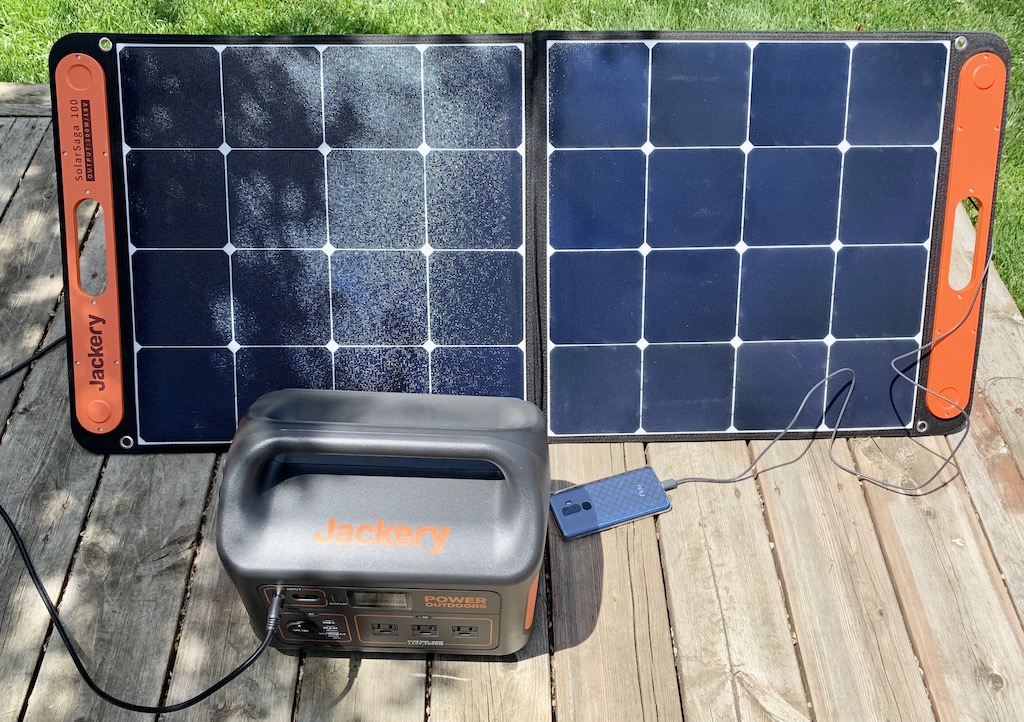
To really take advantage of solar power, up to four Solar Saga panels can be used in parallel, but to do so you’ll need a parallel adapter which is sold separately (it is included with Explorer 1500 which requires a minimum of tow panels in parallel).
Do you need a portable power station?
At the end of the day, even a modestly specced portable power station like the Jackery Explorer 550 represents a significant outlay of cash. So you need to ask yourself if you really need one.
That’s something each of us has to decide. If you just want to be able to charge your phone, one of these is overkill. Just pick up a power bank. Unless you want to be able to recharge it 100 times …
For me, having a portable power station in the house has been a no-brainer. I still vividly remember the big Northeast blackout of 2003 and after hours of sweltering heat, wishing that I had some way to run a fan or plug in the freezer. My family also camped extensively, sometimes for a week at a time at a site without electricity. I work from home (and did so for a decade pre-pandemic), and having construction or storms knock out power for a few hours at a time is not uncommon.
A Jackery Explorer portable power station is ideal for any and all of these scenarios. It’s like power insurance. Adding a Solar Saga solar panel to the mix may not make sense from a home emergency standpoint (unless you’re concerned about a scenario that could see power out for days or weeks), but it is certainly a useful addition for campers.
If you do decide to look at a power station, Jackery offers Explorers for virtually any application (and budget), ranging from the Explorer 290 to the super-sized (but still technically portable) Explorer 1500.



